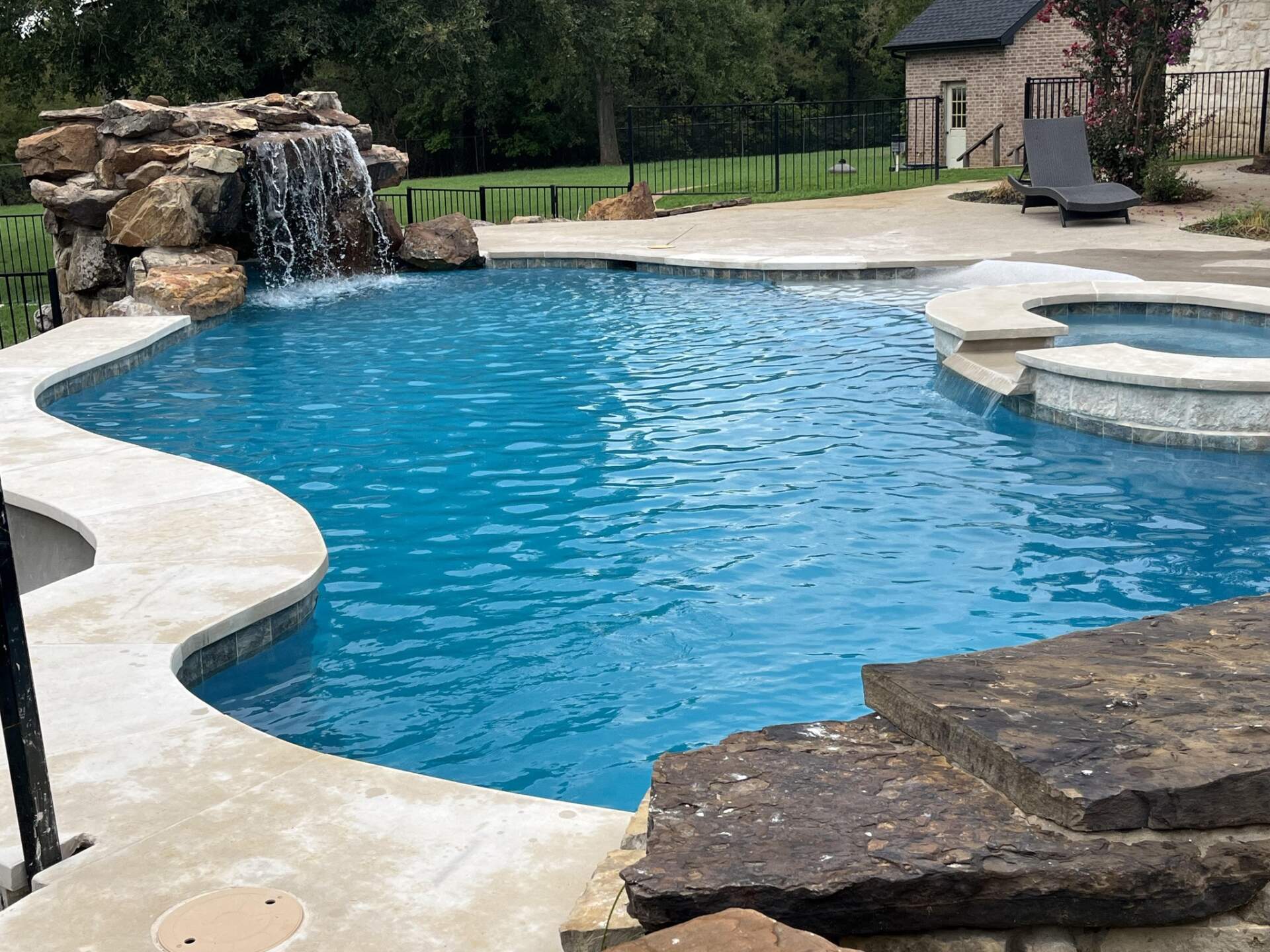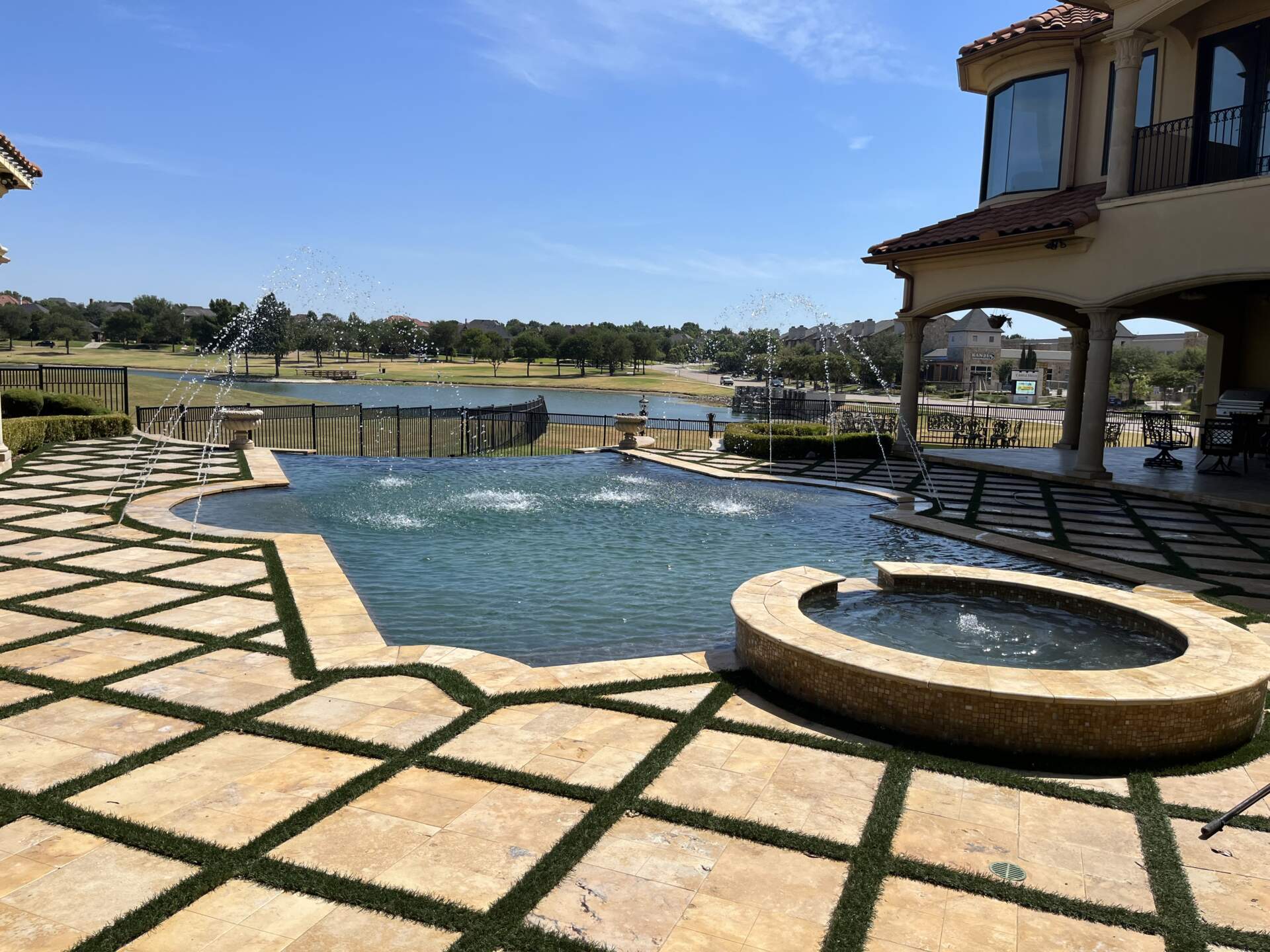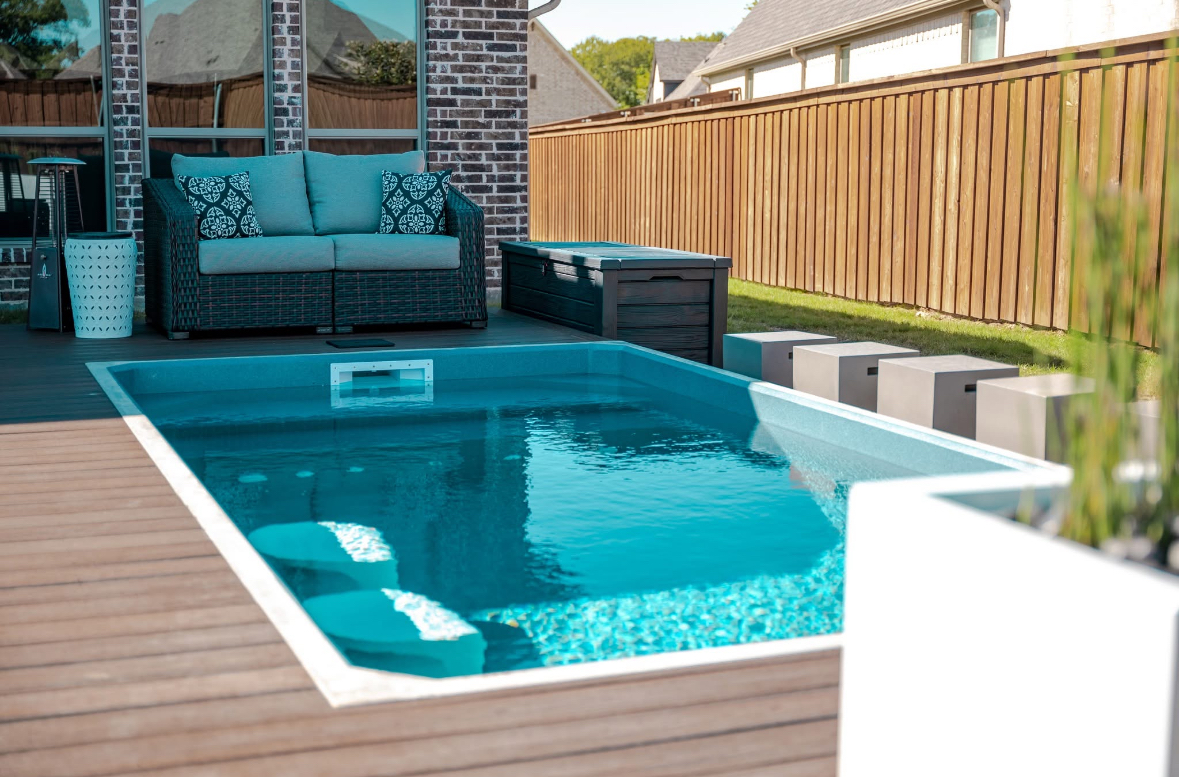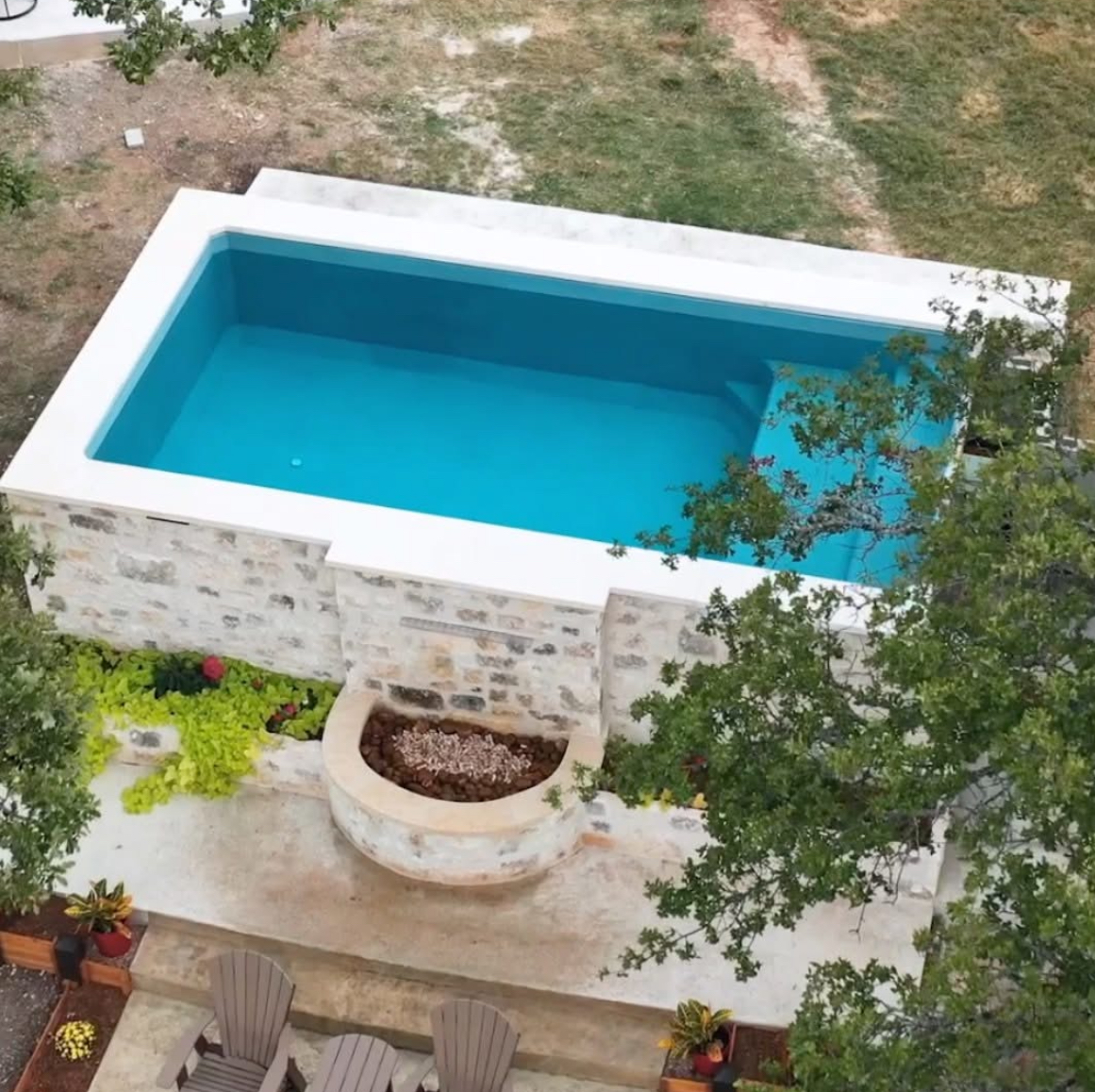If you’re considering building a custom pool in Fort Worth, one of the first questions that comes to mind is about cost. It’s a natural starting point, and understandably so. A pool is a major investment, and homeowners want to have a general sense of what to expect before moving forward.
But here’s the reality: no two pools cost the same. Fort Worth’s terrain, neighborhood requirements, and design preferences vary widely, and so do the costs associated with each. From materials and design to construction conditions and permit needs, there are many moving parts. In this article, we’ll walk through the most important factors that affect the price of building a pool in Fort Worth and explain why the only way to truly understand your potential cost is to get a personalized estimate.
Pool Type and Design Complexity
One of the biggest drivers of cost is the type of pool you choose to build. The design, shape, and layout all play a role.
Simple geometric pools with clean lines tend to involve less formwork and shaping during construction, which can help control labor time and material usage. On the other hand, freeform or lagoon-style pools require more intricate framing, excavation shaping, and concrete application, which can all increase the complexity of the build.
Additional design features also factor in. Built-in tanning ledges, beach entries, sunken seating areas, swim-up bars, or integrated spas all require extra planning and materials. A fully customized pool that blends multiple depths, water features, and unique shapes will naturally require more resources than a minimalist rectangular design.

Soil and Site Conditions
The physical condition of your yard has a major impact on the scope and difficulty of pool construction. Fort Worth has a mix of dense clay soil, rocky patches, and sloped lots, all of which affect how the pool is excavated and supported.
Soil that expands and contracts significantly, which is common in many areas of North Texas, may require engineered reinforcement such as piers or grade beams to stabilize the shell. If your property has a slope, retaining walls or elevation adjustments may be needed, which adds materials and labor.
Limited equipment access, such as in older neighborhoods with narrow gates or small yards, can also increase time and difficulty. Crews may need to use compact equipment or perform more handwork to dig, transport materials, and shape the site.
Pool Size and Depth
Naturally, the bigger the pool, the more materials and labor it takes to build. A pool’s surface area and volume affect the quantity of rebar, concrete, tile, interior finish, and plumbing components. Larger pools also require more powerful pumps, larger filters, and higher-capacity heaters if temperature control is part of your plan.
Depth adds to the equation as well. Shallow pools are easier and faster to excavate and reinforce, while deeper pools require more support and stricter attention to slope transition, especially if diving areas are included.
Pools designed for recreation and relaxation might stay on the shallower side, while pools intended for laps, diving, or added versatility will typically be deeper, requiring more excavation and stronger structural design.
Features and Amenities
Many of today’s custom pools include far more than just a place to swim. Add-ons and amenities are a huge part of the appeal but also a big contributor to the overall cost. Some of the most common options include:
- Water features like waterfalls, deck jets, scuppers, or spillover spas
- Fire features such as fire bowls or linear fire pits
- Spas and hot tubs either integrated or attached
- Automation systems for remote control of pumps, lights, and cleaning
- Custom lighting including multi-color LED systems
- Built-in seating like benches, stools, or swim-up bar areas
- Decking and patios including materials like travertine, pavers, or stamped concrete
- Shade structures such as pergolas or integrated patio covers
- Outdoor kitchens or living areas tied into the pool layout
Each of these adds aesthetic value and enhances the experience, but also requires additional plumbing, electrical, material, and labor investment.

Materials and Finishes
Materials make a significant impact not just on how the pool looks, but how much it costs to build and maintain. Choices in this area are often personal and driven by style, durability, and climate suitability.
Coping and decking options range from standard concrete to high-end travertine or flagstone. Interior surfaces can be simple white plaster or advanced pebble and quartz finishes. Tile selections come in thousands of styles and can be customized for everything from trim accents to full waterline mosaics.
Upgraded materials generally require more time to install and involve higher material costs. Many Fort Worth homeowners prioritize materials that are heat-resistant and durable, especially on decking and coping where summer sun can be intense.
Equipment Choices
Behind the scenes, every pool depends on a network of pumps, filters, heaters, and control panels. These are essential for water circulation, cleaning, temperature control, and lighting.
There are standard configurations that are reliable and widely used, but many homeowners prefer to upgrade for convenience and efficiency. Saltwater systems, energy-efficient variable-speed pumps, UV or ozone sanitizers, and smart automation panels are just a few of the options that can change how the pool operates.
Each piece of equipment has a range of options with different capacities and capabilities. Matching the right system to the size and features of your pool is key, and the selections you make will directly impact the final cost.
Utilities and Infrastructure
Pools don’t exist in isolation. They need electricity, plumbing, gas lines, and sometimes even drainage upgrades to function safely and effectively. Depending on your home’s existing infrastructure, running utilities to the pool area may require:
- Trenching across the yard
- Upgrading the electrical panel
- Extending gas service for heaters or fire features
- Adding backflow preventers or pressure regulators
- Installing storm drainage around decks or hardscaping
Older homes in established Fort Worth neighborhoods may not have sufficient capacity for modern pool equipment, especially when adding extras like spas, lighting, and full backyard kitchens. In those cases, utility work can add both cost and time to the project.

Permits, Inspections, and HOA Requirements
All pools built in Fort Worth require permits and must pass multiple inspections throughout the construction process. These include:
- Engineering and site plan review
- Plumbing and electrical inspection
- Structural inspection (steel and forms)
- Final safety inspection
Permit fees vary depending on municipality and scope. If you live in a community with an HOA, additional costs may be involved to meet architectural review board standards or specific design criteria.
Navigating these approvals takes time and sometimes involves revisions to the original plan. Delays in HOA approval or permit processing can affect the timeline and indirectly influence labor and coordination costs.
Landscaping and Hardscape Integration
Most homeowners don’t stop at just the pool. The surrounding space often gets upgraded as part of the same project. This might include:
- New sod or artificial turf
- Garden beds and irrigation
- Fencing and gates
- Retaining walls
- Seating areas and fire pits
- Pathways or accent lighting
The more integrated your pool is into a full backyard design, the more involved the construction becomes. It also means more crews, coordination, and materials. While this improves the long-term enjoyment and value of the space, it does add to the total cost.
Timing and Project Coordination
The timing of your project can also influence pricing. Construction demand in Fort Worth peaks in the spring and early summer. Scheduling during the off-season may offer some cost efficiencies, while rushing into a build during the busiest months can lead to delays or premium labor costs.
Coordination between subcontractors, material deliveries, utility inspections, and weather conditions all contribute to how smoothly and quickly a build progresses. Unexpected changes, like hidden utility lines or poor soil conditions, can cause scope adjustments that affect the budget.
Why a Personalized Estimate is the Only Way to Know
With all these variables in play, the only way to know what it will cost to build your pool is to get a detailed, site-specific estimate. General numbers found online rarely account for the unique conditions of your yard, the materials you want, or the specific way your pool will be built.
Some projects are straightforward. Others involve custom features, tight access, or complex engineering. Two homes a few blocks apart can have completely different requirements based on soil, utility access, or HOA rules.
A proper estimate should include:
- A full design consultation
- Soil and site evaluation
- Equipment specification based on your layout
- Permit and inspection costs
- Clear breakdowns of optional upgrades
This approach removes guesswork and gives you real, useful numbers to make an informed decision.

Let’s Plan Your Backyard
At Aquaworx Pool Co, we specialize in designing and building beautiful, high-quality pools that reflect the style and function our clients need. From geometric lap pools to resort-style retreats, we build each pool with precision, durability, and craftsmanship.
We serve Fort Worth and surrounding communities with tailored planning and expert construction, built around the specifics of your yard and your vision. If you’re ready to explore what a custom pool could look like at your home, we’ll walk you through every factor that affects the cost and help you make the best decisions for your space.
Contact Aquaworx Pool Co today to schedule your estimate and take the first step toward your dream backyard.

